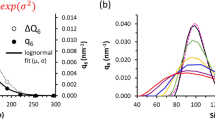Abstract
Global cluster geometry optimization has focused so far on clusters of atoms or of compact molecules. We are demonstrating here that present-day techniques also allow to globally optimize clusters of extended, flexible molecules, and that such studies have immediate relevance to experiment. For example, recent experimental findings point to production of larger clusters of an aminoglycoside closely related to Kanamycin A (KA), together with certain preferred physiological cations, by Pseudomonas aeruginosa. The present study provides first theoretical support for KA clustering, with a close examination of the monomer, the bare dimer, and dimers with sodium and potassium cations, employing global cluster structure optimization, in conjunction with force fields, semiempirical methods, DFT and ab-initio approaches. Interestingly, already at this stage the theoretical findings support the experimental observation that sodium cations are preferred over potassium cations in KA clusters, due to fundamentally different cationic embedding. Theoretically predicted NMR and IR spectra for these species indicate that it should be possible to experimentally detect the aggregation state and even the cationic embedding mode in such clusters.

Kanamycin A










Similar content being viewed by others
References
Campbell EEB, Larsson M (eds) (2000) The physics and chemistry of clusters, no. 117 in Proc of Nobel Symposium. World Scientific
Johnston RL (2002) Atomic and molecular clusters. Taylor and Francis, New York
Catlow CRA, Bromley ST, Hamad S, Mora-Fonz M, Sokol AA, Woodley SM (2010) Phys Chem Chem Phys 12:786
DJ Wales (2003) Energy landscapes. Cambridge University Press, Cambridge
Hartke B (2002) Angew Chem Int Ed 41:1468
The cambridge cluster database. http://www-wales.ch.cam.ac.uk/CCD.html
Görbitz CH, Dalhus B, Day GM (2010) Phys Chem Chem Phys 12:8466
Kim S, Orendt AM, Ferraro MB, Facelli JC (2009) J Comput Chem 30:1973
Karamertzanis PG, Kazantsev AV, Issa N, Welch GWA, Adjiman CS, Panetlides CC, Price SL (2009) J Chem Theor Comput 5:1432
Schröder JM, Harder J (2006) Cell Mol Life Sci 63:469
Harder J, Meyer-Hoffert U, Teran LM, Schwichtenberg L, Bartels J, Maune S, Schröder JM (2000) Am J Respir Cell Mol Biol 22:714
Puius YA, Stievater TH, Srikrishnan T (2006) Carbohydr Res 341:2871
D’Amelia N, Gaggelli E, Gaggelli N, Molteni E, Baratto MC, Valensin G, Jezowska-Bojczuk M, Szczepanik W (2004) Dalton Trans. p. 363
Lu XQ, Zhang M, Kang JW, Wang XQ, Zhuo L, Liu HD (2004) J Inorg Biochem 98:582
Lesniak W, Harris WR, Kravitz JY, Schacht J, Pecoraro VL (2003) Inorg Chem 42:1420
Kopaczynska M, Lauer M, Schulz A, Wang T, Schaefer A, Fuhrhop JH (2004) Langmuir 20:9270
Hermann T, Westhof E (1999) J Med Chem 42:1250
Moitessier N, Westhof E, Henssian S (2006) J Med Chem 49:1023
Huang L, Massa L, Karle J (2007) Proc Nat Amer Soc 104:4261
Monajjemi M, Heshmata M, Haeria HH (2006) Biochem (Moscow) 71:S113
Dieterich JM, Hartke B (2010) Mol Phys 108:279
Goldberg DE (1989) Genetic algorithms in search, optimization and machine learning. Kluwer, Dordrecht
Bandow B, Hartke B (2006) J Phys Chem A 110:5809
Case DA, Darden TA, Cheatham TE, Simmerling CL, Wang J, Duke RE, Luo R, Crowley M, Walker RC, Zhang W, Merz KM, Wang B, Hayik S, Roitberg A, Seabra G, Kolossv´ary I, Wong KF, Paesani F, Vanicek J, Wu X, Brozell SR, Steinbrecher T, Gohlke H, Yang L, Tan C, Mongan J, Hornak V, Cui G, Mathews DH, Seetin MG, Sagui C, Babin V, Kollman PA (2008) Amber 10, Univ California, San Francisco
Stewart, JJP (2009) Mopac, version 10.055l
Werner HJ, Knowles PJ, Lindh R, Manby FR, Schütz M et al (2010) Molpro, development version, a package of ab initio programs
Orca: an ab initio, DFT and semiempirical electronic structure package
Jmol: an open-source java viewer for chemical structures in 3d. http://www.jmol.org
Pov-ray - the persistence of vision raytracer. www.povray.org
Jackson KA, Horoi M, Chaudhuri I, Frauenheim T, Jackson KA (2004) Phys Rev Lett 93:013401
Dudev T, Lim C (2010) J Am Chem Soc 132:2321
Eriksson M, Lindhorst TK, Hartke B (2008) J Chem Phys 128:105105
Schulz F, Hartke B (2002) Chem Phys Chem 3:98
Acknowledgements
B.H. would like to thank the German Research Foundation (DFG) for strong financial support via grant Ha-2498/10. J.M.D. and B.H. thank the North-German Supercomputing Alliance (HLRN) for a generous grant of computer time, and would like to acknowledge the friendly and competent efforts of the HLRN support staff. J.M.D. would like to acknowledge Mats Eriksson for hints on AMBER’s (fixed) input formatting.
Author information
Authors and Affiliations
Corresponding author
Electronic supplementary materials
Below is the link to the electronic supplementary material.
ESM 1
(PDF 34 kb)
Rights and permissions
About this article
Cite this article
Dieterich, J.M., Gerstel, U., Schröder, JM. et al. Aggregation of Kanamycin A: dimer formation with physiological cations. J Mol Model 17, 3195–3207 (2011). https://doi.org/10.1007/s00894-011-0983-x
Received:
Accepted:
Published:
Issue Date:
DOI: https://doi.org/10.1007/s00894-011-0983-x




